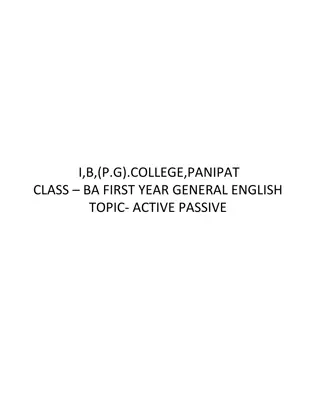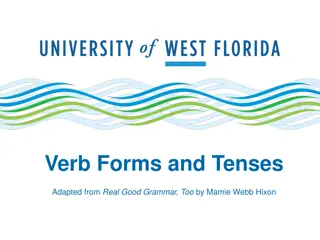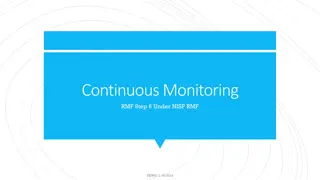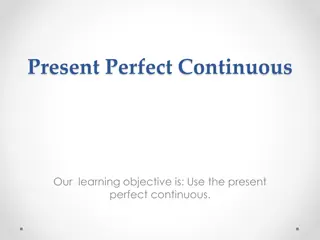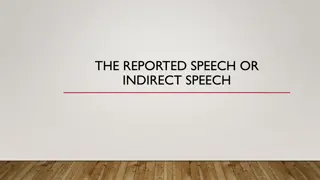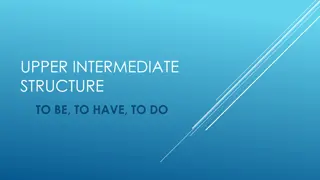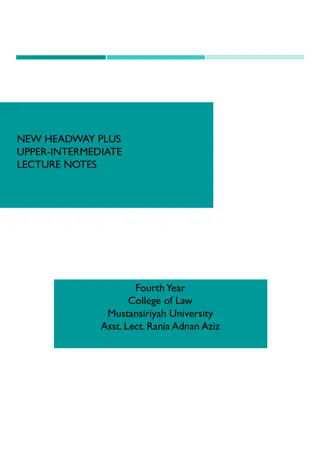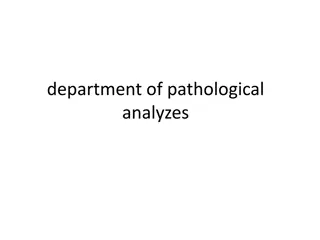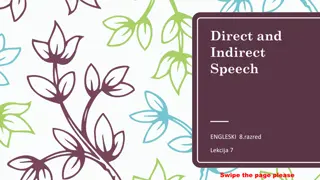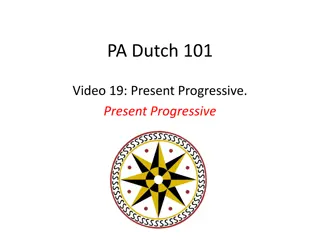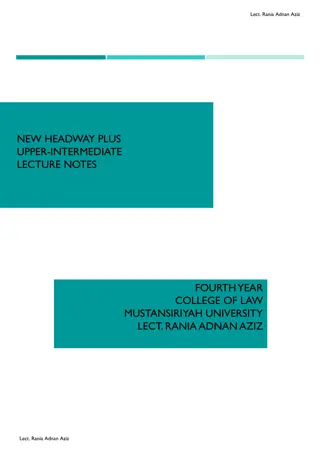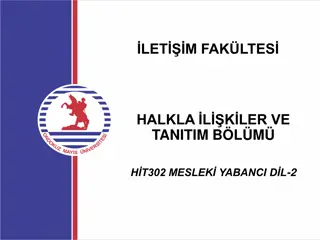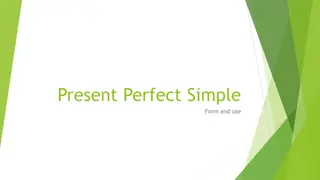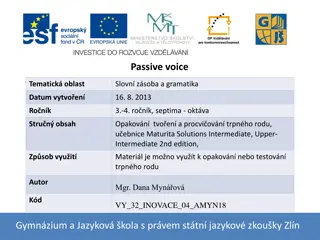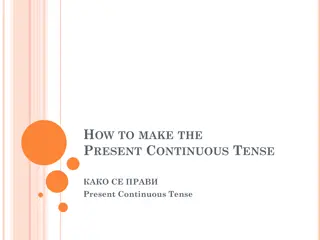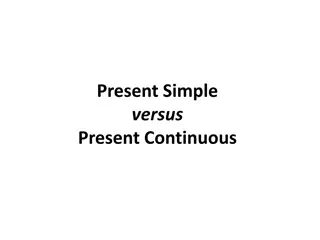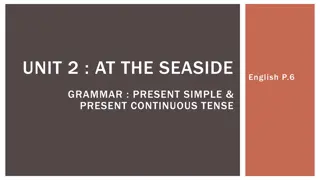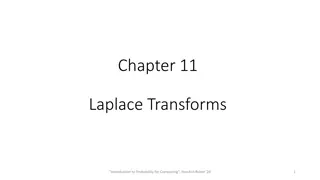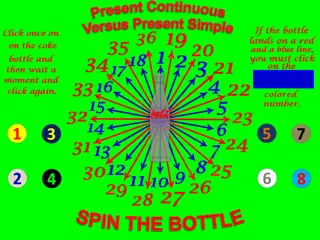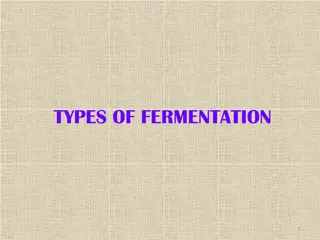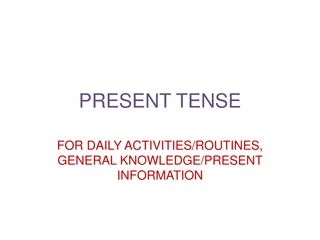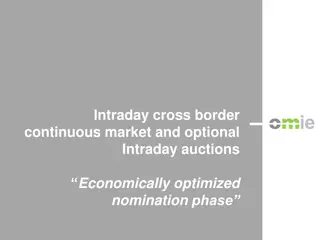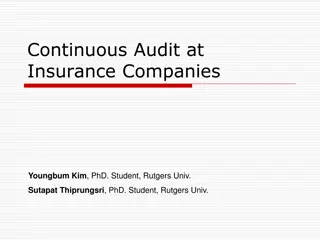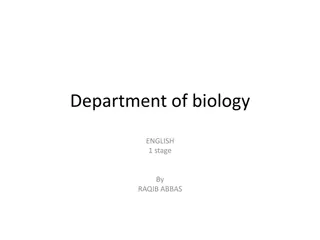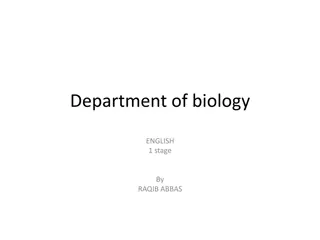Understanding Verb Forms and Tenses in English
Explore the different verb forms and tenses in English, including past, present, and future, as well as simple, continuous, perfect, and perfect continuous aspects. Learn how to use verb forms to create various tenses and understand when to use present, past, or future tense in different contexts.
4 views • 21 slides
Learn Past Continuous Tense - Grade 6 English Lesson
This Grade 6 English lesson focuses on understanding and correctly using the past continuous tense. It covers the rules for forming the past continuous tense, examples of its usage, and an assessment to test comprehension. Students will practice talking about actions happening at specific times in t
4 views • 6 slides
Europe Continuous Bioprocessing Market
The Europe Continuous Bioprocessing Market is expected to grow at a CAGR of 19.1% from 2023 to 2030 to reach $206.1 million by 2030. Continuous manufacturing is an emerging trend spanning various industries. From automotive to paper, businesses are embracing continuous manufacturing to enhance effic
3 views • 2 slides
Homeworking: The Shift to Remote Work and Present Perfect Continuous Tense
Ahmed Ali, an IT specialist, shares his experience of working from home during the Corona pandemic. He discusses the pros and cons of homeworking, including the challenges of balancing work and family life. The lesson also covers the usage of the present perfect continuous tense to describe ongoing
1 views • 8 slides
Understanding Types of Production Systems: Intermittent vs. Continuous
Types of production systems are categorized into Intermittent Production System and Continuous Production System. In Intermittent Production, goods are produced based on customer orders in a flexible and non-continuous manner, allowing for a variety of products. Examples include goldsmiths making or
10 views • 17 slides
Active and Passive Voice Rules for All Tenses: Present Simple, Continuous, and Perfect
Exploring the rules of active and passive voice for different tenses like Present Simple, Continuous, and Perfect. Understand the structure and examples for each tense to master the transformation between active and passive voice forms.
1 views • 20 slides
Understanding Wh-Questions and Present Continuous in English
Exploring the use of different Wh-questions in English to inquire about people, time, reasons, objects, and places. Also, delving into the concept of present continuous tense, focusing on its negative form with examples provided for better understanding.
2 views • 9 slides
Understanding Verb Forms and Tenses in English Grammar
Learn about verb forms and tenses in English grammar, including the five forms of every English verb, the differences between regular and irregular verbs, and how to use verb tenses such as present, present perfect, and present participle. Discover how to apply present tense in various contexts and
1 views • 15 slides
Understanding Continuous Monitoring in Risk Management Framework (RMF)
Explore the continuous monitoring process in the Risk Management Framework (RMF) under the NISP RMF FISWG. Learn about the six steps in the RMF process, DSS-provided RMF guidance, and an overview of RMF continuous monitoring strategies and security control families. Discover how to outline DSS RMF p
1 views • 25 slides
Understanding the Present Perfect Continuous Tense
Master the present perfect continuous tense with a guide on its formation, usage, and examples. Enhance your English skills by answering questions in the present continuous tense to demonstrate your understanding.
0 views • 4 slides
Understanding Work Placements and Present Perfect Tense
Work placements provide valuable work experience opportunities for individuals looking to enhance their career prospects. This lesson explores the concept of work placements, their benefits, and how they can lead to job opportunities. Additionally, it covers the usage of the present perfect tense in
0 views • 8 slides
Mastering Reported Speech: Simple Present to Simple Past
Learn how to convert statements from the simple present tense to the simple past tense in reported speech with clear examples. Practice exercises are provided for better understanding, covering various sentence structures including negative sentences and present continuous to past continuous transfo
0 views • 45 slides
English Verb Structure Practice
Practice identifying subjects and verbs in sentences featuring the structure of "to be," "to have," and "to do." Learn about verb tenses, including present continuous, past continuous, present perfect, and past perfect. Explore the correct usage of "have," "has," and "had" as both full verbs and aux
0 views • 12 slides
Understanding the Present Perfect Tense in English Grammar
The lecture notes explore the Present Perfect tense, highlighting its connection between past actions and their relevance in the present. It compares the Past and Present Perfect tenses, discussing the nuanced differences and providing examples for clarity. The document covers the usage of the Prese
0 views • 8 slides
Understanding Present Perfect Continuous Tense and Usage of Some and Any
Describing the present perfect continuous tense, this content explains how to form, ask questions, and use negatives in this tense. Additionally, it covers the usage of "some" and "any" in sentences. Synonyms are also discussed to help expand vocabulary knowledge.
0 views • 14 slides
Oregon District Continuous Improvement Planning Process
Explore the key components of Oregon's district continuous improvement planning process, including objectives, executive memos, ODE commitments, and the essential elements that all Oregon districts must incorporate into their continuous improvement plans. Learn about the shifts in the overarching vi
0 views • 9 slides
Health Education Unit Overview
This educational unit focuses on identifying and using different illnesses, practicing the interrogative form of present continuous tense, and enhancing listening, speaking, and writing abilities. Students will learn about various common illnesses and how to form interrogative sentences in the prese
0 views • 10 slides
Learn Direct and Indirect Speech in English: Grade 8 Lesson 7
Explore the transformation from direct to indirect speech in various tenses such as Simple Present, Present Continuous, Simple Past, Past Continuous, and Simple Future. Understand the changes in verbs and adverbs of time and place. Practice exercises to enhance your understanding.
0 views • 28 slides
Learning Present Progressive in PA Dutch
Explore the concept of Present Progressive in PA Dutch through examples and practice exercises. Understand the differences between the two present tense forms and learn how to form sentences in Present Progressive. Practice translating sentences using both normal conjugation and the Present Progress
0 views • 7 slides
Understanding Narrative Tenses: Past Simple, Present Perfect, and Past Continuous
Explore the nuances of narrative tenses through detailed lecture notes by Lecturer Rania Adnan Aziz. Learn the differences between Past Simple and Present Perfect, grasp the usage of Past Continuous, and understand the significance of Past Perfect in expressing past actions and timelines. Dive into
0 views • 6 slides
Learn English Grammar - Present Continuous Tense Practice
This content provides a detailed overview and practice exercises on the Present Continuous Tense in English grammar, focusing on passive voice constructions. Various examples illustrate the formation and usage of this tense, reinforcing understanding through images and exercises. Whether you are a s
0 views • 12 slides
Understanding the Present Perfect Simple Tense and Its Usage
Learn about the basic rules, formation, and usage of the Present Perfect Simple tense in English. Explore how to form the tense, use shortened forms, understand when to use "have" and "has" with past participles, differentiate between Present Perfect and Past Simple, know when to use the Present Per
0 views • 11 slides
Understanding the Present Perfect Tense in English Grammar
The present perfect tense in English grammar is a combination of the present tense and perfect aspect used to express past events with present consequences. It is formed using the auxiliary verb "have" and the past participle of the main verb. This tense is essential for indicating completed actions
0 views • 27 slides
Understanding Passive Voice: Rules and Examples
Passive voice is a grammatical construction used when the focus is on the action itself rather than the doer. It is formed by combining a form of "to be" with the past participle of a verb. This content explores the usage of passive voice in different tenses - present simple, present continuous, pas
0 views • 14 slides
Understanding the Present Continuous Tense
Explore how to form the Present Continuous Tense using the present simple of 'be.' Learn how to create affirmative, negative, and interrogative forms, including 'wh-' questions. Discover the spelling rules for verbs ending in 'e,' short one-syllable verbs, and those ending in 'ie.'
0 views • 17 slides
Understanding Present Continuous Tense in English Grammar
Explore the present continuous tense in English grammar through examples and explanations. Learn how to form positive, negative, and question sentences in this tense, as well as common uses such as actions happening now, future plans, temporary situations, and habitual actions. Enhance your grasp of
0 views • 50 slides
Understanding the Difference Between Present Simple and Present Continuous Tenses
Present Simple and Present Continuous tenses serve different purposes in English grammar. The Present Continuous is used for actions happening at the moment, longer actions in progress, and future plans. On the other hand, the Present Simple is used for repeated actions and facts/generalizations. Re
0 views • 18 slides
Learning Present Simple and Present Continuous Tenses at the Seaside
Explore the usage of present simple and present continuous tenses through examples and exercises related to everyday activities at the seaside. Understand how to form sentences in these tenses and differentiate between them based on ongoing actions or habitual activities. Practice completing sentenc
0 views • 51 slides
Understanding Laplace Transforms for Continuous Random Variables
The Laplace transform is introduced as a generating function for common continuous random variables, complementing the z-transform for discrete ones. By using the Laplace transform, complex evaluations become simplified, making it easy to analyze different types of transforms. The transform of a con
0 views • 17 slides
Understanding Present Continuous and Present Simple Tenses with Examples
Explore the differences between Present Continuous and Present Simple tenses through various examples like sitting, liking, wanting, walking, running, going, eating, studying, playing, drinking, reading, and talking. Each example is illustrated with an image and a description, making it easier to gr
0 views • 37 slides
Understanding Probability Density Functions for Continuous Random Variables
Probability density functions (PDFs) are introduced for continuous random variables to represent the likelihood of events in a continuous space. Unlike discrete probability mass functions, PDFs operate with integration instead of summation, ensuring total probability is 1. Consistency and differenti
1 views • 32 slides
Understanding Stative and Active Verbs in Present Simple and Present Continuous
Explore the differences between stative and active verbs in present simple and continuous tenses through examples related to thinking, feeling, having, being, tasting, smelling, looking, weighing, and measuring. Complete sentences using the verbs appropriately. Enhance your grasp of English grammar
0 views • 16 slides
Overview of Different Types of Fermentation Processes
Explore the various types of fermentation processes including batch fermentation, fed-batch fermentation, continuous fermentation, solid-state fermentation, anaerobic fermentation, and aerobic fermentation. Each process has its own advantages and disadvantages, influencing factors such as sterilizat
0 views • 18 slides
Present Tense: Daily Activities & Information
Explore the present tense for daily routines, general knowledge, and current information in this informative content. Discover what activities are usually done on Saturday evenings and Sunday mornings, learn about the ministers in charge of Maritime and Fisheries Affairs and Agriculture, and get fam
0 views • 10 slides
Understanding the Present Perfect Continuous Tense
The Present Perfect Continuous Tense is used to emphasize the duration of an action that started in the past and continues up to the present, indicating ongoing actions with time expressions like 'for,' 'since,' 'all morning,' etc. Learn how to use this tense correctly and distinguish it from the Pr
1 views • 10 slides
Coexistence of Continuous Cross-Border Intraday Markets and Implicit Auctions
Intraday cross-border continuous markets combine continuous trading with optional intraday auctions, providing participants with opportunities to trade firm energy within price areas. The coexistence of continuous trading and implicit auctions offers advantages such as market price acquisitions and
0 views • 9 slides
Continuous Audit at Insurance Companies
Creating a rule-based model for anomaly detection, this research focuses on developing an architecture for continuous audit systems. By utilizing historical data, the scope includes detecting fraud, discrepancies, and internal control weaknesses, leading to a maturity model for automated continuous
0 views • 27 slides
Department of biology
The present continuous tense, also known as the present progressive tense, is used to describe ongoing actions or events happening in the present. It is formed by using the present tense of the verb "to be" followed by the -ing form of the main verb. Learn about forming positive, negative, and quest
0 views • 5 slides
Understanding the Past Continuous Tense in English Grammar
Past Continuous Tense is used to describe ongoing actions in the past. It is formed with "was/were" + present participle (-ing). Learn its structure, usage, negation, and questioning forms with examples. Enhance your English grammar skills by mastering the Past Continuous Tense.
0 views • 4 slides
Utilizing Present Continuous & Verb 'Can' in English Grammar Lessons
In this English grammar lesson, students learn to use the present continuous tense for activities happening at the moment or future plans. They also understand the usage of 'can' for expressing ability positively or negatively. The rules for forming present continuous verbs and examples are provided
0 views • 9 slides





